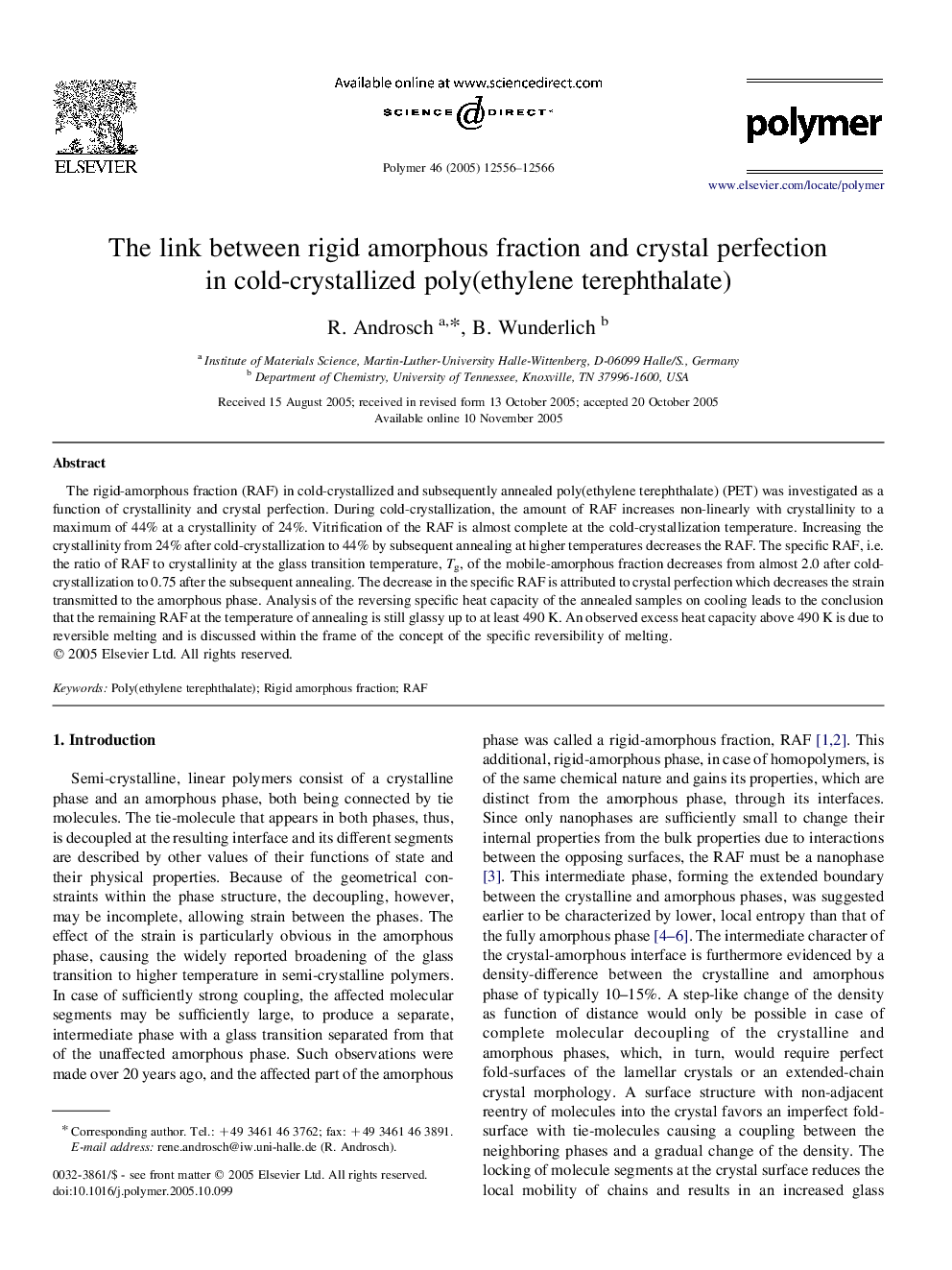| Article ID | Journal | Published Year | Pages | File Type |
|---|---|---|---|---|
| 5189657 | Polymer | 2005 | 11 Pages |
Abstract
The rigid-amorphous fraction (RAF) in cold-crystallized and subsequently annealed poly(ethylene terephthalate) (PET) was investigated as a function of crystallinity and crystal perfection. During cold-crystallization, the amount of RAF increases non-linearly with crystallinity to a maximum of 44% at a crystallinity of 24%. Vitrification of the RAF is almost complete at the cold-crystallization temperature. Increasing the crystallinity from 24% after cold-crystallization to 44% by subsequent annealing at higher temperatures decreases the RAF. The specific RAF, i.e. the ratio of RAF to crystallinity at the glass transition temperature, Tg, of the mobile-amorphous fraction decreases from almost 2.0 after cold-crystallization to 0.75 after the subsequent annealing. The decrease in the specific RAF is attributed to crystal perfection which decreases the strain transmitted to the amorphous phase. Analysis of the reversing specific heat capacity of the annealed samples on cooling leads to the conclusion that the remaining RAF at the temperature of annealing is still glassy up to at least 490Â K. An observed excess heat capacity above 490Â K is due to reversible melting and is discussed within the frame of the concept of the specific reversibility of melting.
Related Topics
Physical Sciences and Engineering
Chemistry
Organic Chemistry
Authors
R. Androsch, B. Wunderlich,
